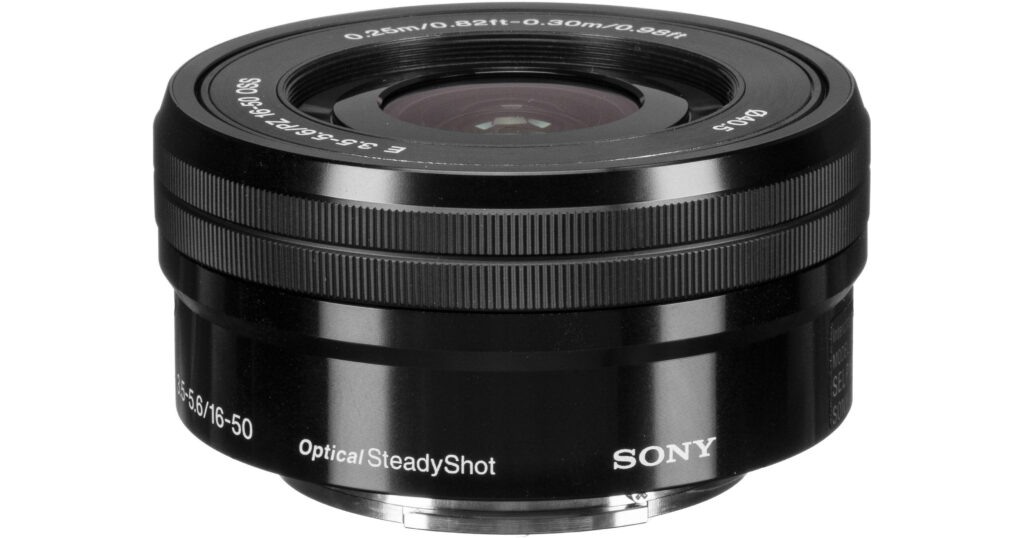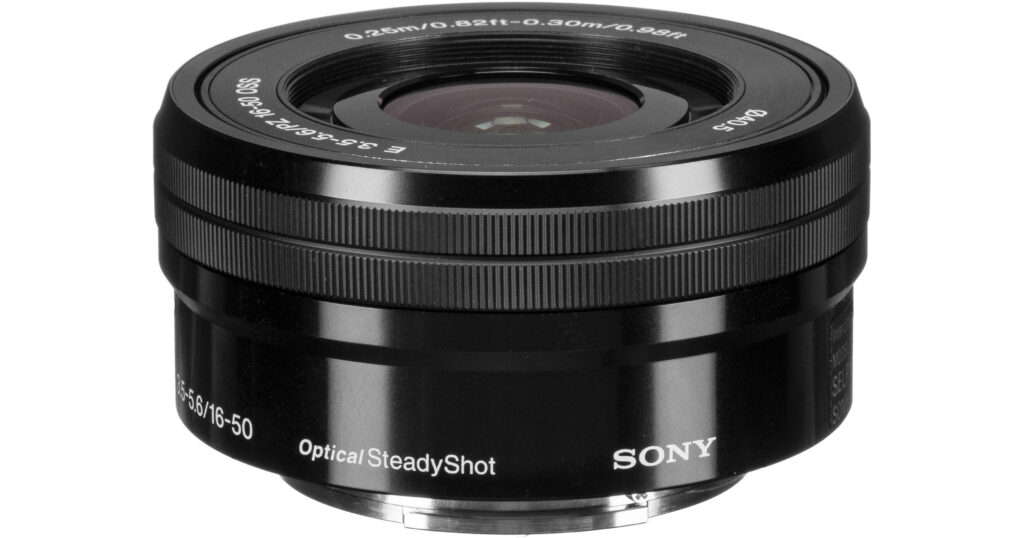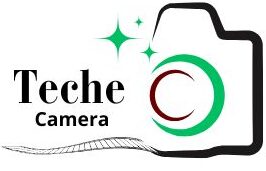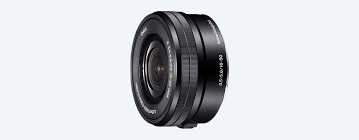Is 16-50mm lens good? This question comes up frequently among beginner photographers, vloggers, and even some experienced shooters. The 16-50mm lens, especially found in kit bundles for APS-C mirrorless cameras (like Sony and Fujifilm), is often underrated. But its performance, versatility, and value deserve a closer look.
In this guide, we’ll deeply analyze the 16-50mm lens, its strengths, weaknesses, and how it compares to other lenses. Whether you’re a beginner or someone looking for a compact walkaround lens, this article gives you all the insights you need to decide if the 16-50mm lens is right for you.
What is a 16-50mm Lens?
A 16-50mm lens is a zoom lens typically designed for APS-C format mirrorless cameras. The focal length range of 16mm to 50mm offers wide-angle to short telephoto coverage, making it suitable for:
- Street photography
- Travel
- Portraits
- Vlogging
- Everyday shooting

Most 16-50mm lenses are lightweight, retractable, and electronically controlled, features that appeal to content creators and casual users.
Popular models include:
- Sony 16-50mm f/3.5-5.6 OSS PZ
- Fujifilm XC 16-50mm f/3.5-5.6 OIS
Build Quality and Design
While the 16-50mm lens is compact and travel-friendly, its build quality is usually average. Here’s what to expect:
- Plastic Construction: Helps keep the lens lightweight but not weather-sealed
- Power Zoom (Sony version): Smooth zoom for video but lacks tactile feel
- Retractable Design: Makes it pocketable when not in use
- No Manual Aperture Ring: Common in entry-level lenses
Despite this, its compact size is a huge plus for vloggers and travelers.
Zoom Range and Versatility
The zoom range of 16mm to 50mm is surprisingly flexible:
- 16mm: Ideal for landscapes, architecture, and vlogs
- 24-35mm: Great for street photography and events
- 50mm: Good for portraits and tighter framing
On APS-C sensors, this range gives a 24-75mm equivalent, essentially covering wide to short telephoto. It’s perfect for all-around use.
Image Quality in Real Use
The image quality of the 16-50mm lens is generally decent, especially when you consider its budget-friendly price point. In real-world shooting, it delivers solid performance for casual photography. Sharpness is quite good in the center across all focal lengths, although edge sharpness tends to drop off, particularly at the wide 16mm end. This isn’t a deal-breaker for most users, especially those shooting for web use or social media platforms.
Colors and contrast appear natural straight out of the camera, though they may lack the vivid punch seen in more expensive lenses. If you’re looking for that extra pop, you might want to do some minor post-processing. At 16mm, barrel distortion is present but mostly handled well by in-camera corrections on modern bodies. Chromatic aberration is also minimal and largely corrected by software.
Autofocus and Manual Focus Performance
- Autofocus: Fast and silent on most cameras, works well for video with face/eye tracking
- Manual Focus: Fly-by-wire, no physical distance scale
While not ideal for manual focus purists, the autofocus is more than capable for most users.
Low Light Performance
The biggest limitation is its aperture:
- Variable aperture f/3.5-5.6: Limits depth of field and low-light capability
You’ll need to raise ISO or use a tripod in dim conditions. For night photography or indoor shoots, a fast prime lens would be better.
Bokeh and Depth of Field
Don’t expect dreamy background blur:
- F/5.6 at 50mm: Gives only mild separation
- Short minimum focusing distance: Helps in getting some background blur
If you want strong bokeh, this isn’t the best choice. Consider a 50mm f/1.8 or 35mm f/1.4.
Video Capabilities
The 16-50mm lens offers solid performance for video work, particularly for beginners and casual content creators. At 16mm, it’s wide enough to be ideal for vlogging, allowing you to capture yourself and your surroundings comfortably while handheld. On Sony cameras, the built-in power zoom feature provides smooth and controlled zoom transitions, which can add a polished look to your footage without needing additional gear.
Its compact and lightweight design makes it a great choice for use with gimbals or handheld rigs, reducing strain during long shoots and improving stabilization. This portability is a major advantage for travel videographers or creators filming on the go. However, one limitation is the variable f/3.5-5.6 aperture, which struggles in low-light conditions. In darker environments, you may notice more grain or need to bump up your ISO, which could affect overall video quality. Despite that, for daytime shooting, vlogs, and social media videos, this lens performs reliably well.
Use Case Comparison: Who Is It Good For?
Street Photographers:
- Lightweight and discreet
- Versatile zoom range
Vloggers and YouTubers:
- Power zoom and wide angle are great for handheld video
Beginners & Casual Shooters:
- Covers multiple focal lengths in one lens
- Easy to use and compact
Travel Photography:
- Ideal for traveling light
- Versatile for landscapes, city scenes, and portraits
16-50mm vs. Prime Lenses
| Aspect | 16-50mm Lens | Prime Lens (e.g. 35mm f/1.8) |
| Versatility | Yes – Zoom range | No – Fixed focal length |
| Sharpness | Good but not great | Superior |
| Bokeh | Weak | Strong |
| Low Light | Needs higher ISO | Wide aperture handles it well |
| Size | Compact | Also small and lightweight |
Prime lenses are better in quality, but the 16-50mm wins in convenience.
16-50mm vs. 18-55mm: Which is Better?
The 18-55mm lens often has a metal mount and better optics, but it’s:
- Larger
- Heavier
- Lacks power zoom
The 16-50mm starts wider (useful for vlogging) and is more compact, making it better for content creators.
Lens Compatibility and Mount Options
The 16-50mm lens is primarily available for Sony E-mount (APS-C) cameras and was also previously made for Fujifilm X-mount systems, though the Fujifilm version has since been discontinued. It’s important to note that this lens is not compatible with full-frame cameras like the Sony A7 series unless used in crop mode, which reduces resolution. It is also not intended for DSLR systems, as it is specifically designed for mirrorless APS-C bodies.

This makes it an ideal match for compact Sony mirrorless models such as the Sony Alpha a6000, a6100, a6400, a6500, and a6600, where it often comes bundled as a kit lens. Its compact design complements the small form factor of these bodies, making it a great option for casual photographers and travelers.
If you’re buying this lens second-hand or separately, ensure it’s labeled for APS-C E-mount and avoid confusing it with similar-looking full-frame lenses, which can result in vignetting or mounting issues.
Expert and User Opinions
Professional reviewers and everyday users often agree on the 16-50mm’s value—but with realistic expectations.
- DPReview labeled it a “surprisingly usable kit lens with decent sharpness,” especially considering its compact size and price point.
- Ken Rockwell, known for blunt reviews, referred to it as “a good beginner lens, just don’t expect miracles.” He emphasizes its practicality but warns against expecting high-end image quality.
- User forums like DPReview and Reddit photography threads contain mixed feedback. Many users praise the lens for its portability and flexibility, especially for travel, but note edge softness, distortion at 16mm, and a plasticky feel as trade-offs.
Despite its flaws, experienced users recognize that with good lighting and correct settings, the 16-50mm can produce sharp, vibrant images suitable for everyday shooting, social media content, and even some light professional use.
Pros and Cons Summary
Here’s a more detailed breakdown of the strengths and weaknesses of the 16-50mm lens:
Pros:
- Lightweight and Portable: Weighing only around 116g, it’s an ideal choice for those who want to travel light or shoot for extended periods without fatigue.
- Versatile Focal Range: Covers wide (16mm) to short telephoto (50mm), perfect for landscapes, street, portraits, and casual use.
- Smooth Zoom for Video: The power zoom feature (on Sony models) is great for cinematic zoom transitions, especially useful for video content creators.
- Affordable: As a kit lens or a budget standalone option, it provides good value for money.
- Electronic Zoom Mechanism: Enables precise focal control when paired with compatible cameras, useful in video or one-handed shooting.
Cons:
- Average Image Quality: Center sharpness is decent, but corner sharpness and fine detail suffer, especially at wide angles and open apertures.
- Limited Low-Light Capability: With a variable maximum aperture of f/3.5–5.6, it struggles in dim environments without boosting ISO or using a tripod.
- Weak Bokeh: Due to the small aperture, the lens doesn’t produce strong background blur or separation, which can limit its use in portrait work.
- Plastic Build: The construction feels basic and lacks weather-sealing, making it less suitable for rough conditions or long-term durability.
- Distortion at 16mm: Barrel distortion and vignetting are common at the wide end but are mostly corrected via software in-camera or during post-processing.
Conclusion: Is 16-50mm Lens Good?
So, is 16-50mm lens good? Yes—if you’re just starting out or need a travel-friendly, versatile option, the 16-50mm lens is a practical choice. It covers a wide range of shooting scenarios and works great for vlogging, casual street photography, and daily use.
However, for professionals or enthusiasts needing low-light performance, sharpness, or strong bokeh, this lens may not cut it. Consider upgrading to a fast prime or pro zoom once you’re ready.
FAQs
1. Is the Sony 16-50mm lens good for beginners?
Yes, the Sony 16-50mm lens is a great choice for beginners. It offers a versatile zoom range, compact design, and easy-to-use features, making it ideal for learning photography without the complexity of pro lenses.
2. Can the 16-50mm lens take good portrait photos?
The lens can take decent portrait shots, especially around 50mm in good lighting. However, due to its limited aperture (f/5.6 at the telephoto end), the background blur (bokeh) is not very strong compared to prime lenses.
3. Is the Sony 16-50mm compatible with full-frame cameras?
No, it is not designed for full-frame cameras. It’s built for Sony APS-C E-mount bodies. If mounted on a full-frame Sony camera, it will automatically switch to crop mode, reducing the resolution.
4. How sharp is the Sony 16-50mm lens?
The center sharpness is fairly good, especially in the 20–40mm range. However, edge sharpness and image detail drop off at wide angles (16mm) and when shooting wide open. It’s adequate for everyday use but not ideal for critical work.
5. Does the 16-50mm lens work well for video?
Yes, it works well for casual video. The power zoom feature allows smooth zooming, and it’s lightweight, which pairs nicely with gimbals and handheld shooting. However, the aperture limits its low-light performance in video.

